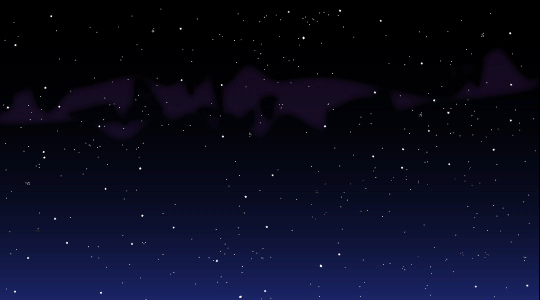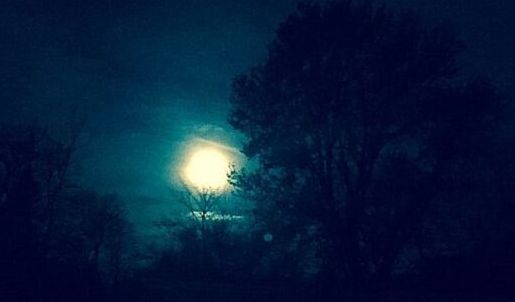
Travel suggestions and tips

Look up tonight!
The Draconid meteor shower is very short. Instead of a month or even a couple of weeks, the Draconids are basically a one-night stand. Watch for them right after sunset in the northwestern sky, Oct. 7, 2024. (Though you might also catch them Oct. 8.)
Their radiation point is in the constellation Draco from stars Eltanin and Rastaban, known as the Dragon’s Eyes.
Typically, there will be about 10 meteors an hour, but occasionally dozens have been known to shoot out.
Find more information at EarthSky.
Then, watch overhead later in the month as the Orionids take over the sky, peaking with about 20 meteors an hour Oct. 20-21. Coming from 1P/Halley, these are way better known than the Draconids. They are actually overhead now and go to mid-November but peak about the fourth week of October.
Unlike the early in the evening Draconids, these Halley meteors appear late night (after midnight) and early, early morning. They are the second outpouring from Comet Halley. The first of that comet’s debris came in May and are known as the Eta Aquarids.
The Orionids are so called because the meteors seem to radiate from the constellation Orion. Also, unlike the Draconids’ moon phase, the Orionids will be competing with a moonlit sky.
Find more information at: Orionid meteor shower 2024: When, where & how to see it | Space and Orionids Meteor Shower 2024 (timeanddate.com)

Photo courtesy of NASA
As the song says, “catch a falling star.”
The Perseids, considered one of the best meteor showers to watch in the Northern Hemisphere, are going on right now but their peak is Aug 11-12 this year of 2024.
What to expect: 50 to 90 meteors flying across the sky in one hour.
Advantages of this shower: The moon is at its first-quarter phase so its light is not likely to interfere with meteor sightings. In addition, if you wait until after midnight, the moon will have set so the sky is even darker. But best is to watch for them just before dawn when its radiant is higher.
According to EarthSky, the Perseids usually have a good train of light and color. And they appear to come from the constellation Perseus near the Double Cluster which is why they refer to the constellation Perseus the Hero.
If not outside, watch the Perseids from the Virtual Telescope Project in Manciano, Italy, says Space.
“We will be covering the Perseid meteor shower, sharing it live on the night of its peak online,” Virtual Telescope Project founder and astronomer Gianluca Masi said in an email to Space.com.
“This year, the sky conditions will be good, with almost no moon interference. We will be taking images from our facility in Manciano, in the Maremma countryside, under one of the darkest skies in Italy,” he said.”
Also hear from NASA about the Perseid Meteor shower from its Jet Propulsion Laboratory at California Institute of Technology at What’s Up – August 2024 (nasa.gov)
Where to look: The Perseids appear to radiate from a point in the northeastern sky but with as many as can appear during its peak just lie back and look at the sky.
Jodie Jacobs

(Photo courtesy of NASA)
Look up tonight. The Eta Aquarids, named for the constellation Aquarius from where they seem to radiate, has been shooting stars since April 19 and will continue to do so through May 28 but their peak is this weekend.
They have been known to reach 50 meteors per hour. Although they can be seen in both hemispheres, they are supposed to be easier to catch in the southern hemisphere.
Their parent comet is 1P/Halley but for more information visit Eta Aquarids Meteor Shower 2024 (timeanddate.com)

(Photo courtesy of NASA)
How to “catch” a falling star? Go outside somewhere without a distracting light, Dress for the weather and be patient.
One of the oldest known meteor showers, the Lyrids, will be peaking tomorrow on Earth Day. Best is to watch for them late Monday night and very early Tuesday morning.
They tend to average about 18 per hour but have been known to shoot out as many as 100 meteors per hour. However, the moon which is almost full, now, might make the meteors harder to catch.
These meteors are very bright but they move fast. Their velocity is 29 miles (47 kilometers) per second.
The Lyrids started about April 15 and will last until April 29 but the highest number will be seen shooting across the sky before dawn, April 23.
First reported by the Chinese in 687 BC, the Lyrids’ radiant is Constellation Lyra with C/1861 G1 Thatcher as its comet of origin.
For more information visit EarthSky, NASA Science and Space.
T

here are always meteors flying overhead. A good overview is at NASA.Gov So don’t worry if you miss one group in the news. You can watch for others that peak a short time later.
In October the Draconids peak Oct. 8-9 with best chance to catch theses somewhat sparce meteors shortly after nightfall. They are the dust particles from the Comet 21P/Giacobini-Zinner. Visit SPACE for a detailed graph of the radiation point.
But if you miss them, the more prolific Orionid meteor shower which can produce between 30 to 80 meteors pers hour, will peak about ten days later Oct. 20-21. They come from the debris of Comet 1P/Halley, (Halley’s Comet). For more information visit Time and Date.

If you have clear skies and can watch after midnight, chances are good that you can catch way more than one “falling ” star this weekend.
The bright, prolific Perseids, will be shooting debris from the 109P/ Swift- Tuttle comet at 90 or more meteors per hour late at night, Aug. 11-13 and peaking Aug. the 13th. The moon is a waning crescent so shouldn’t be a light factor.
They already started in mid-July and continue until Sept 1 but this weekend is expected to be their biggest display.
They are fun to watch as they are fast (37 miles per second) and are streaks of light with long trains or “wakes.” Plus, they are usually colorful.
Best time to look is very, very early in the morning before the sun rises. They shoot all over the sky but the radiant (where they seem to come from) is the northern section of constellation Perseus which is higher in the sky shortly before dawn.
For more information and charts visit NASA and EarthSky

Sky watchers might catch a glimpse of the Capricornids. They are not abundant but if you see a bright slash across the sky it’s likely to be a Capricornid meteor. They peaked July 26 but are continuing through mid-August.
Look for the triangular Capricornus (Sea Goat) constellation for the Capricornid radiant.
Then be rewarded for looking up the beginning of August when the Delta Aquarids fly across the sky at about 10 per hour.
They peaked July 29 but continue through Aug. 19. However, you might miss some because they are not bright and don’t have a noticeable tail.
For their radiant look for Aquarius the Water Bearer (see a triangle of stars with a fourth star in the middle) between Capricornus and Pegasis’ Great Square.
Next, watch for the Perseids in mid-August. They are already shooting across the sky but will peak about Aug. 13-15 and continue through Aug. 24.
They come from the Swift-Tuttle also are abundant but more easily seen than the Delta Aquarids.
For more July-Aug. meteor shower info visit Space and the Old Farmer’s Almanac.

May 5 is celebrated as a victorious battle day by Mexican communities in the United States. So if in Chicago find a couple of Cinco de Mayo restaurant deals at Dining Out Eating In.
But if wondering why there are “falling stars” overhead or why it’s so bright outside that night, check out the following information.
The Flower Moon
If the sky isn’t particularly cloudy where you live than the evening will seem brighter than usual May 4-6, 2023. May’s full Moon has total illumination in the afternoon of May 5 at 1:36 p.m. EDT but will appear full in the evening of May 4-6. The clue to the name of the May full Moon surrounds us almost everywhere there is a plot of earth.
The Old Farmer’s Almanac has the time the moon will be rising above the horizon and setting where you live.
As followers of Travel Smart know by now, the name of a month’s Moon (and yes, it often is referred to the whole month by the same name), often comes from Native American tribes, long ago European farmers and also religions and cultures that base some festivals on lunar events.
Thus the May Moon is called the Planting Moon, Budding Moon, Milk Moon and Egg Laying Moon. For more name info visit The Old Farmer’s Almanac and (timeanddate.com).

Meteors
May 5-6 is also when to watch for the Eta Aquarids, a meteor shower that typically sends about 50 meteors an hour across the sky. Their parent is 1pHalley which produces two meteor showers during the year.
The May shower is named for a bright star in constellation Eta Aquarli and is the first meteor shower from Comet Halley debris.
Earth passes through Halley’s path around the Sun again in October when its debris is known as the Orionid meteor shower that peaks around October 20.

The prolific Lyrid Meteor Shower fills the skies with “falling stars” April 15 through April 29, 2023. But to really see them in action check the late night sky after the moon has set during their peak activity April 22-23.
However, the moon should not be a factor because it is between its new moon (dark) phase April 20 and First Quarter Moon (sliver) April 27.
The Lyrids typically produce about 18 meteors per hour traveling about 29 miles per second. On rare occasions they have produced a storm of meteorites shooting across the sky.
Lyrids’ arrival in Earth’s atmosphere is an annual sky event discovered by A.E. Thatcher in April, 1861. Thus, they are formally attributed as debris from Comet Thatcher (comet C/1861 G1 Thatcher).
To get a good idea of where they seem to originate visit Time and Date for its live-action photo centered on an area between the constellation Lyra (The Harp) with its bright Vega star, and its neighbor, constellation Hercules.
Best is to go out after midnight through pre-dawn when the star, Vega, is overhead. Be patient and allow your eyes to acclimate to the dark sky. You don’t have to look for the Lyrids’ radiant (origination point) because their trail appears longer further away.
If you have ever seen a sky show in a planetarium such as the Adler in Chicago, you know that stars and constellations rise and move from one direction in the sky to another. So, you may look northeast early in the evening for Vega, then overhead as the night progresses and then more southwest at dawn.